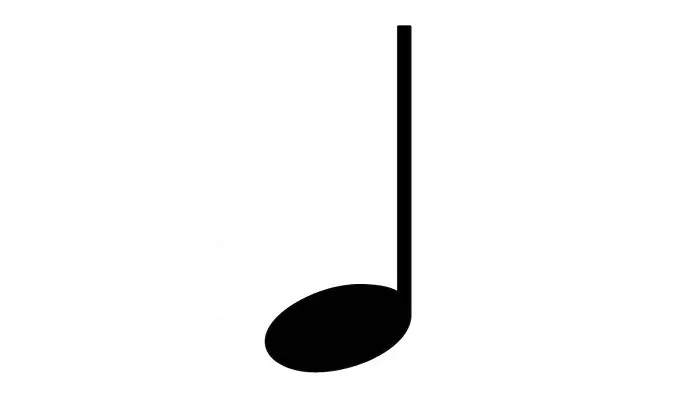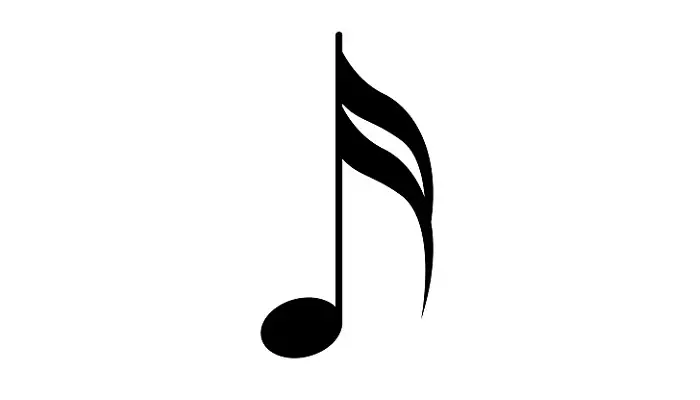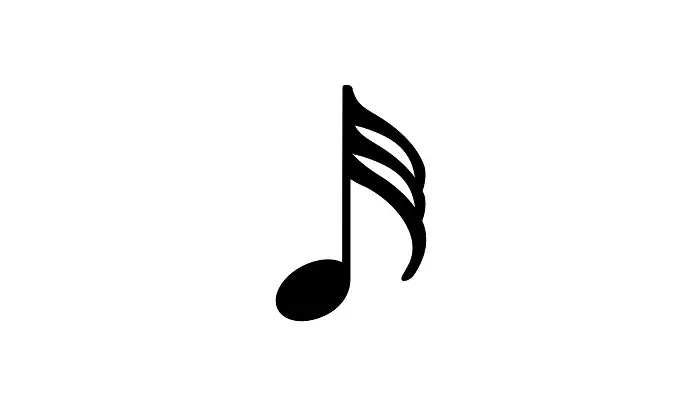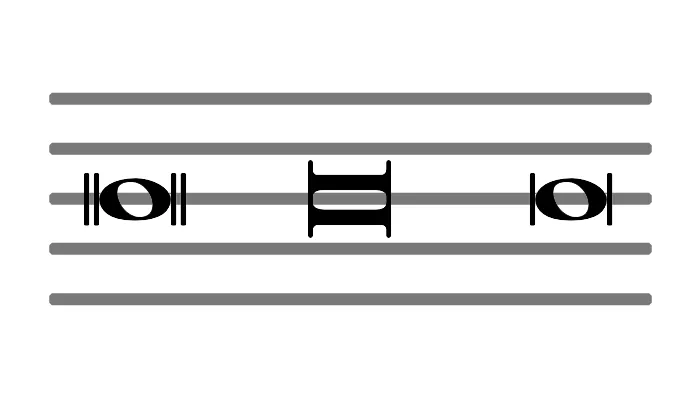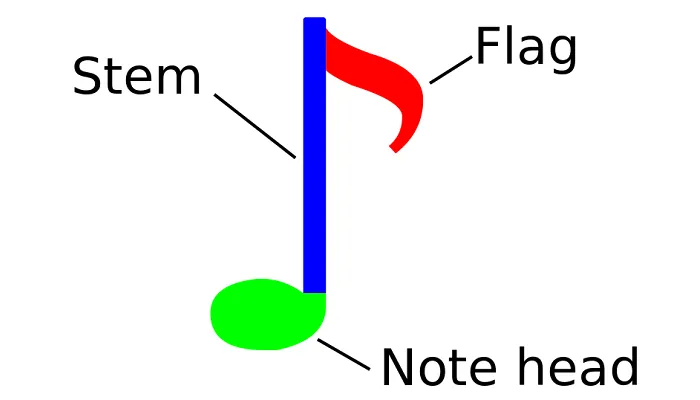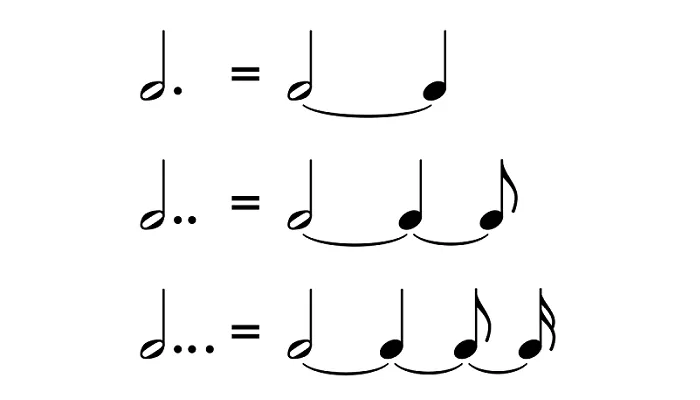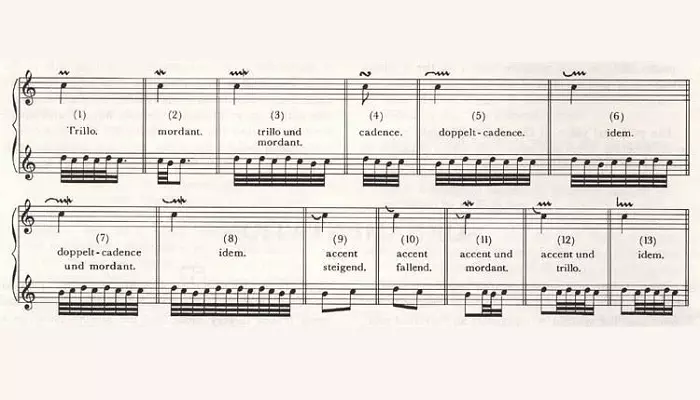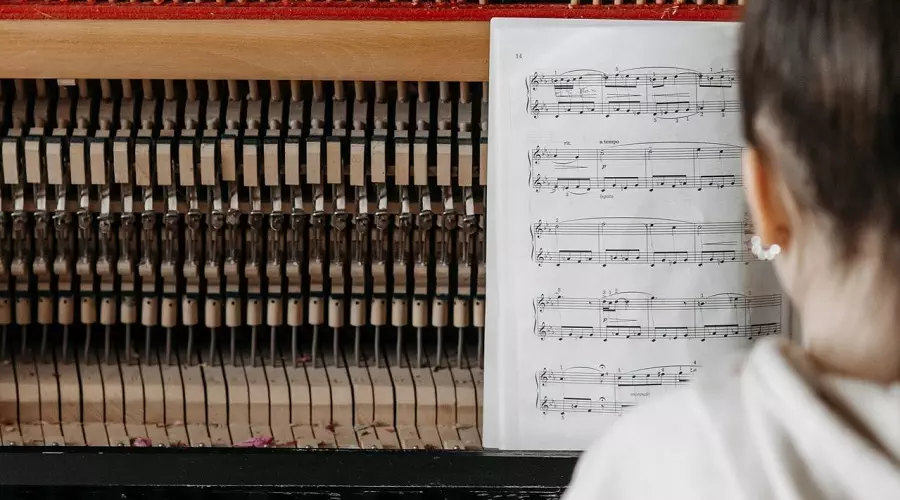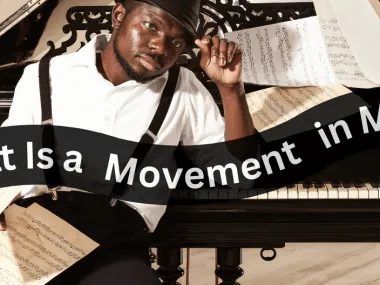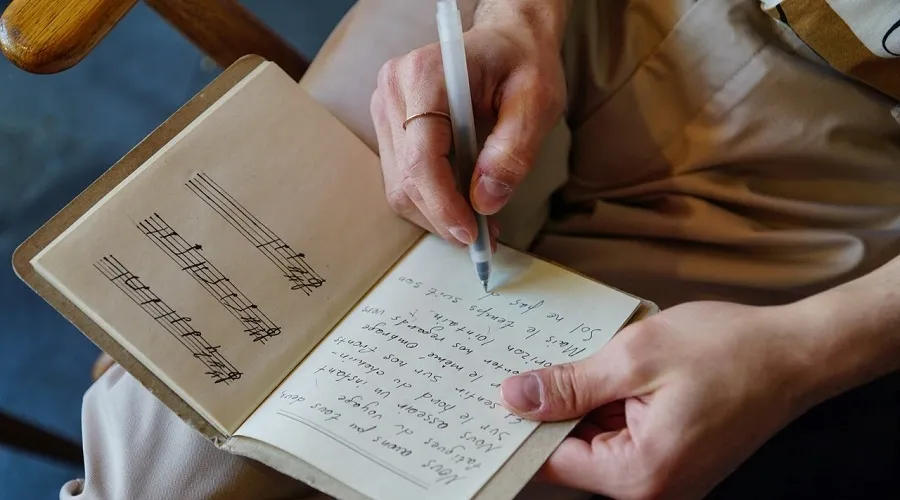In music, a note is a symbol that signifies a musical tone. In English, the note is also the sound itself. Notes can represent the pitch and length of a sound in musical notation.
A note may also be a pitch class. Notes are the building blocks of most written music: the discretization of musical phenomena that promote performance, interpretation, and examination.
Its usage is triggered by one of two motives: memory aid or as a contact aid. Extending the former tends to mold the composition to a degree of complexity that is unlikely in a solely oral culture. Extending the latter acts as a way of storing (though imperfectly) music over a long period, encourages production by others, and introduces music in a manner appropriate for study and examination.
The key components of musical sound are pitch, or the position of musical sound on a scale (i.e. length of time between notes); length (i.e. rhythm, meter, tempo); timbre or tone color; and volume. No notation can treat all these components with accuracy.
Some only handle a particular pattern—e.g. a melody, a rhythm. Others handle various simultaneous patterns.
What are Written Notes?
A written note can also have a note value, a code that specifies the note’s relative length. The length of the half note is a double note (breve); full note (semibreve); half note (minim); quarter note (crotchet); eighth note (quaver); sixteenth note (semiquaver); thirty-second note (demisemiquaver); sixty-fourth note (hemidemisemiquaver) and one hundred and twenty-eighth note.
Each note is allocated a particular vertical location on the staff position (line or space) as decided by the key in a score. A noted name is allocated to each line or space. These names are memorized by the musicians and help them to know, at a glance, the correct pitch to play on their instruments.
Various Types of Notes
One of the first ways to start learning music is to read about all the kinds of musical notes there are. Knowing the names of all of these notes and their time values, how to draw them, and what the pieces of the notes are called is the secret to being able to read music well.
Names of Music Notes and their Time Values
When writing music, a composer wants to know how long it takes to play each sound.
Semibreve (Whole Note)
The semibreve, or in the US called a ‘whole note,’ has a notehead in the shape of a hollow oval—like a half note—but without a note stem. It is the whole duration of the calculation in the time signature.
The semibreve has a value of four beats. This means that when we play the semibreve, we count to four when holding the note.
The whole rest is a connected mark, or semibreve rest. It typically refers to a whole measure, but can sometimes imply a rest for a whole note’s length in longer time signatures.
Whole rests are drawn as filled-in rectangles usually hung under the second line from the musical staff’s top. Still, they can sometimes be positioned under a separate line (or ledger line) in more complex polyphonic passages, or where two instruments or vocalists are written on one staff and one is momentarily silent.
The entire note symbol is first used in the music notation of the late 13th-century. It is derived from the circular, stemless semibreves of mensural notation, hence the British name’s root.
Minim (Half Note)
In music, a half note (American) or a minim note (British) is played for half the length of a full note (or a half note) and double a quarter note (or crotchet). It was called Latin because it was the shortest of the five-note values used in early medieval music notation.
It’s similar to a semibreve, except it has a line running out of the note head’s right-hand side. This line is referred to as a stem.
The American expression half note is a 19th-century loan translation of the German halbe note.
The Catalan, French, and Spanish names stem from the fact that the minima were the shortest unfilled note in mensural white notation, which is also true in modern style. The shape of the earlier black notation resembles that of the current quarter note. Greek, Chinese, Japanese, and Korean names mean “half,” and in Greek, new and older words are used.
Crotchet (Quarter Note)
A quarter note (American) or a crotchet note (British) is a note played for a quarter of the length of the entire note. Sometimes, musicians would say that a crotchet is a single rhythm, although this is not necessarily true, since the time signature of the music indicates the beat; a quarter note may or may not be a beat.
Quarter notes are labeled with a filled-in oval note head and a simple, flagless stem. The stem normally points upwards if it is below the middle line of the stave or down if it is on or over the middle line. However, the orientation of the stem may vary in more than one portion.
Quaver (Eighth Note)
The eighth note (American) or quaver is a musical note that has been played for one-eighth of the length of the entire note, hence the term. This is double the value of the 16th note. It is half the length of a quarter note, one quarter the duration of a half note, one eighth the duration of a full note, one-sixteenth the duration of a double whole note, and one thirty-second the duration of a long note. It is similar to fusa in mensural notation.
Eighth notes are labeled with an oval note head and a straight note stem with a flag note. The stem is set to the right of the notepad. It continues upwards if the notepad is situated below the staff’s middle line. The notepad’s left is extended downwards if the notepad is located on or above the middle line of the staff instrumental notation.
In vocal songs, the middle-line note head stretches upwards instead of downwards. A similar symbol is the eighth rest (or quaver rest) which signifies silence for the same duration.
A single eighth note is often flagged, whereas two or three are usually beamed in clusters.
Semiquaver (16th Note)
In music, the 16th note (American) or the semiquaver (British) is a note struck for half the length of the 8th note (quaver), hence the terms. It is the equivalent of semifusa in mensural notation, first found in the notation of the 15th-century. The sixteenth notes are labeled with an oval note head and a straight note stem with two flags.
A single 16th note is often flagged, whereas two or more are typically beamed in clusters. The corresponding symbol is the 16th pause, which signifies silence for the same duration.
As for all the notes with the stems, the sixteenth notes are drawn to the note head’s right, facing upward while below the musical staff’s middle line. If they are on or above the middle line, the stems are drawn to the note head’s left, facing down.
Flags are always on the right side of the stem, which bends to the right. The flags start at the top and curve down. On the stems facing down, the flags start at the stem’s bottom and curve up.
If several sixteenth or eighth notes (or thirty-second notes, etc.) are adjacent to each other, flags can be attached to a beam. Note the similarity in the notes of the sixteenth notes and the eighth notes. Different laws refer to smaller divisions such as thirty-second notes (demi-quavers) and sixty-fourth notes (hemidemisemiquavers).
The note is extracted from the semifusa in mensural notation. However, semifusa also refers to the modern sixty-fourth tone in Spanish, Catalan, and Portuguese.
Demisemiquaver (32nd Note)
In a song, a thirty-second note (American) or demisemiquaver (British) is a note that has been played for 1⁄32 of the length of the entire note (or semibreve). It lasts half as long as the sixteenth note (or semiquaver) and twice as long as the sixty-fourth note (or hemidemisemiquaver).
Thirty-second notes are labeled with an oval filled-in note head and a straight note stem with three flags or beams. A single thirty-second note is often flagged, while two or three are usually beamed in clusters. As for all the notes with the stems, the thirty-second notes are drawn with the stems to the note’s right, extending to where they are below the musical staff’s middle line.
If they are on or above the middle line, the stems are drawn to the note head’s left, extending down. Flags are always on the right side of the stem, which bends to the right. The flags begin at the top and curve down.
For the stems extending downwards, the flags start at the stem’s bottom and curve upwards. When several thirty-second notes or eighth notes are adjacent to each other, the flags can be attached to the beam. Similar laws shall refer to smaller divisions, such as sixty-fourth notes.
A similar symbol is a thirty-second pause or demisemiquaver rest that signifies silence for the same length as a thirty-second note.
Various Other Notes
These are the key notes that you can come across and use in musical notation, but you will also get shorter and longer notes.
Hemidemisemiquaver (64th note)
In music notation, a sixty-fourth note, or hemidemisemiquaver or semi-demi quaver, referred to as a half-thirty-second note, is a note played for half the length of a thirty-second note. It first appears at the end of the 17th-century and, aside from the occasional case of a hundred and twenty-eighth notes and two hundred and fifty-sixth notes, it is the shortest value used in musical notation.
Sixty-fourth notes are labeled with an oval note head and a straight note stem with four flags. The stem is drawn to the left of the note head heading down while the note is above or in the staff’s middle row.
If the note head is below the middle line, the stem is drawn to the note head’s right. A single 64th note is often flagged, whereas two or three are typically beamed in groups.
A similar, but rarely encountered, symbol is the sixty-fourth rest which denotes silence for the same length as the sixty-fourth note.
Notes shorter than a sixty-fourth note are seldom used, although a hundred and twenty-eighth note—otherwise known as a semi hemidemisemiquaver—and even shorter notes are sometimes used.
Breve (double whole note)
In a song, a double whole note (American), a short note (British), or a double note is a note that lasts two times as long as the whole note (or semibreve). It is the second-longest note value still in use in popular music notation.
In modern notation, a brevium is usually represented in either two ways: as a hollow oval note head, like a whole note, with one or two vertical lines on each side, as on the left of the picture, or as a rectangular shape often used in an older notation, seen in the center of the image. Since it lasts longer than a bar in most typical time signatures in general usage, the brief is seldom found except in English music, where the half-note is often used as a beat unit.
A similar symbol is a double stop, which typically signifies silence for the same length. Double rests are drawn as filled-in rectangles, filling the whole vertical space between the second and third lines from the musical staff’s top.
They are also used in long quiet passages that are not separated into different bars to signify the two bars’ remainder. This and longer rests are generally known as multiple rests.
Music Note Tree (Or Pyramid)
The music note tree is a perfect visual way to explain all forms of music notes’ relationships. The note tree is a schematic representation of how the note principles work. You may even see it as a rhythm tree or a note pyramid, but they’re all the same thing.
It begins with a semibreve (whole note) at the end, separated into two minims (half notes). Two minims are equivalent to one semibreve, so half of the notes are called half of the entire note. Then each minim can be separated into two crochet (quarter notes).
Two crochet are equivalent to one minim, and four crochet are equal to one semibreve. Then you can break each crochet into two quavers (eighth notes). Two quavers are equal to one crotchet, or four quavers are equal to one minimum, or eight quavers are equal to one half-breve.
Then each quaver can be separated into two semiquavers. Two half-quavers are equal to one quaver, or four half-quavers are equal to one crotchet, or eight half-quavers are equal to one minimum, or 16 half-quavers are equal to one half-breve (which is why they are called the 16th notes).
One thing to mention is that you don’t have to use a crotchet (quarter note) to reflect a single rhythm. This is popular since most of the time signatures that beginners study are those with a number four as their bottom number, reflecting a crotchet rhythm.
But you might use any note to represent a single beat, for time signatures with a number two as their bottom number, so a minimal (half note) will represent a single beat. Or for time signatures with a number eight, a dotted crotchet will beat as their bottom number.
Note Stems
In musical notation, stems are “thin, vertical lines that are directly connected to the [note] head.” Stems can point up or down. Different-pointing stems suggest the voice of polyphonic music written on the same staff.
In one voice, the stems typically point down for notes on the middle line or above, and up for notes below. If the stem points up from the note head, the stem comes from the note’s right side, but it comes from the left side if it points down. If several notes are beamed together, the stem’s position is determined by the mean of the lowest and highest notes in the beam.
An exception to this rule: if the chord includes a second, the stem runs between the two tones, the higher on the stem’s right and the lower on the left. If the chord comprises an odd-numbered cluster of notes a second apart, the outer two will be on the right part of the stem, while the middle note will be on the other side.
The stem length should be that of an octave on the staff, either an octave higher or lower than the note head, depending on the stem’s direction. If the note head is more than an octave removed from the staff’s middle line, the stem would be elongated to meet the middle line. In any polyphonic music in which two pieces are written on the same staff, the stems are usually simplified to keep the music physically focused on the staff.
Stems can be adjusted in several ways to change the rhythm or other types of performance.
Note Tails
Note tails work a bit differently from notes with tails like quavers and semiquavers. They often come from the stem’s right side, whether they point up or down. The way to note it is that the tails still obey the lead of the beat.
In other words, we’re reading music from left to right. The note tails often point in the direction of the music.
Beaming Notes Together
In music theory, notes of less rhythmic significance than a quarter note, such as the eighth or the 16th note, have “tails” attached to them. Connecting a few notes to the tails is what we call “beaming.” Beaming notes together is important because it makes sheet music much easier to read.
Beaming Quavers (Eighth Notes)
When you beam quavers together, you use their note tails to join the stems together. They become two quavers on their own. There are a lot of conventions and rules on how many quavers can be together.
Beaming Semiquavers (Sixteenth Notes)
It functions the same for semiquavers, but instead of using a single beam between their stems, we use two beams. It’s because they’ve got two tails. Only add an extra beam or two for demisemiquavers and hemidemisemiquavers, based on how many tails the note has.
Dotted Notes
A dotted note is a note with a small dot written after it in western musical notation. The first argument raises the simple note’s length by half (the initial note with an additional beam) of its original value in current usage. This means that a dotted note is equal to writing a simple note bound to half the dotted note’s value.
Tied Notes
In music notation, the tie is a curved line linking the heads of two notes of the same pitch, meaning that they are to be played as a single note for a length equal to the sum of each note’s values. The tie is similar in appearance to the slur; however, slurs blend tones of various pitches that need to be played separately.
The tie is a curved line over or below two notes of the same tone, which means that they are to be carried out as one-note equal to the two notes’ duration. A tie is a curved line joining two notes of the same pitch to indicate that the second is a continuation of the first.
Ornaments
Musical ornaments are a shorthand way to compose more complex musical instruments, but with a basic symbol. They’re used to embellish music and make it more fun with arrangement and character. There are several different forms, such as twists, trills, and acciaccaturas.
Types of Ornaments
There are several different types of ornaments that you’re likely to see while reading and playing music.
- Acciaccaturas
- Appoggiaturas
- Turns
- Mordents
- Trills
Triplets
Another musical note that you might see is a group of notes with a number 3 above the end. These notes with a number 3 over them are a form of tuplet called a triplet. We use triplets to break notes into 3 equal parts.
Here are a few popular triplets:
- Quarter note triplet – A quarter note triplets consist of three-quarter notes over the same amount of time as two-quarter notes or one-half notes. Quarter note triplets are known as crotchet triplets in Britain.
- Eighth note triplet – The eighth note triplet includes three eighth notes in the space usually filled by two eighth notes or a quarter note. In Britain, eight note triplets are known as quaver triplets.
- Sixteenth note triplet – The sixteenth note triplet consists of three sixteenth notes over the range of two sixteenth notes or one-eighth note. Seventeenth note triplets are known as semiquaver triplets in Britain.
Even a triplet will inject a dynamic rhythm into an otherwise staid musical expression. A repeat pattern of triplets may produce the effect of compound meters, particularly when the composer juxtaposes the triplet rhythm against the steady quarter note or the eighth note pulse.
Duplets
A duplet is a form of tuplet that allows you to play two notes at a time of three notes. They work in the same manner as a triplet – this is where you play three notes in the span of two – just the other way around.
When you’re in a compound moment, the rhythm is still a dotted beat. In other words, any beat can be divided into three.


